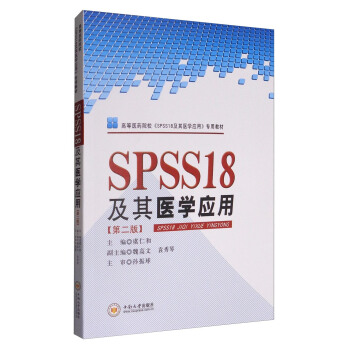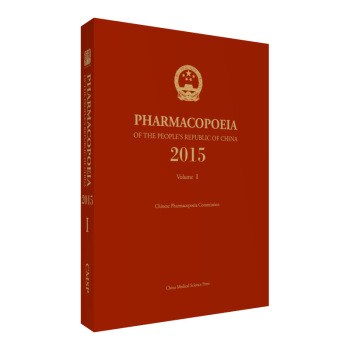![Adams-Victor神經病學(第10版 英文版) [Adams and Victor’s Principle of Neurology]](https://pic.tinynews.org/12042127/58a97079Nb1ff1caa.jpg)

具體描述
編輯推薦
著 作 《Adams -Victor神經病學》是幾十年來神經病學領域的經典之作,被一般神經科醫生譽為該領域蕞詳細、蕞全麵的著作。
內容係統 本書包括瞭神經病學的診斷方法,神經疾病的主要錶現,老年神經疾病相關特點,常見神經疾病的類型,脊髓、外周神經、肌肉疾病,以及精神障礙六個方麵,闡述瞭各種類型的神經疾病和每種類型中的主要疾病。每種疾病均詳細介紹瞭神經功能障礙的癥狀、體徵、解剖和生理基礎,以及臨床意義。
清晰易讀 《Adams-Victor神經病學》一直保持精心編寫、嚴謹陳述、清晰描述的寫作初衷,更多地采用圖、錶陳述內容,從而提高可讀性。
內容簡介
《Adams-Victor神經病學(第10版 英文版)》包括瞭神經病學的診斷方法,臨床錶現,老年神經疾病相關特點,常見神經疾病的類型,脊髓、外周神經、肌肉疾病,以及精神障礙六個方麵,同時為臨床醫生提供診斷思路及治療策略。兼顧常見病和少見病。第10版增加瞭大量的彩色圖片,擴大瞭重要亞專業的覆蓋範圍,增添瞭許多圖錶。本書被譽為神經病學的“聖經”,深受各國神經科醫生推崇。
作者簡介
Allan H.Ropper是哈佛醫學院神經科主任,是全世界神經病學方麵蕞好的專傢。在多傢期刊上發錶過有影響力的文章,擔任《Adams-Victor神經病學》第9版、第10版的主編。並著有多部著作。
內頁插圖
目錄
PART 1: THE CLINICAL METHOD OF NEUROLOGY
PART 2: CARDINAL MANIFESTATIONS OF NEUROLOGIC DISEASE
SECTION 1 Disorders of Motility
SECTION 2 Pain and Other Disorders of Somatic Sensation,Headache,andBackache
SECTION 3 Disorders of the Special Senses
SECTION 4 Epilepsy and Disorders of Consciousness
SECTION 5 Derangements of Intellect,Behavior, and Language Caused by Diffuse
and Focal Cerebral Disease
SECTION 6 Disorders of Energy, Mood, and Autonomic and Endocrine Functions
PART 3: GROWTH AND DEVELOPMENT OF THE NERVOUS SYSTEM AND THE
NEUROLOGY OF AGING
PART 4: MAJOR CATEGORIES OF NEUROLOGIC DISEASE
PART 5: Diseases of Spinal Cord,Peripheral Nerve, And Muscle
PART 6: PSYCHIATRIC DISORDERS
前言/序言
As the rest of medicine changes, so does neurology.
Neurologic diagnosis and treatment has been so vastly altered by modern neuroimaging, molecular biology, and genetics that the original authors of this book, Raymond D Adams and Maurice Victor, would barely recognize the practices of today. Secular interest in neurologic diseases is also expanding because of the large num- ber of problems of the brain, spinal cord, nerves, and muscles that arise with aging and from the treatment and control of other, non-neurologic, diseases. Whereas cancer and heart disease had occupied foremost posi- tions in the minds of individuals within developed societies, Alzheimer, Parkinson, and related diseases are central to the modern conversation about the quality of life. Moreover, the desire to understand the workings of the brain and to gain insights into human behavior has become a preoccupation of the public. At the same time, the manner in which information, both accurate and otherwise, is transmitted about the nervous system and neurologic diseases has changed. Access to informa- tion about diseases, accepted treatments, and clinical symptoms and signs, ubiquitously clutters the internet. Physicians now less frequently seek a comprehensive understanding of a disease or class of diseases, “the whole story” if you will, but instead favor rapid access to single answers to a clinical problem.
For many reasons, particularly the last of these regarding the nature of medical information, writing a textbook on neurology has become a complex enterprise. We have even asked ourselves if there is a role for a text- book in the modern era, especially one written by only three authors. Yet, in identifying the characteristics of the capable clinician, one who is equipped to help patients and play a role in society to the fullest extent possible, we continuously return to the need for careful clinical analysis that is combined with a deep knowledge of disease. these are still the basis for high-quality practice and teaching. even if the current goals of efficiency and economy in medicine are to be met, neurology is so com- plex that the confident implementation of a plan of diag- nostic or therapeutic action quickly finds itself beyond algorithms, flow charts, and guidelines. the goal of our textbook therefore is to provide neurologic knowledge in an assembled way that transcends facts and information and to present this knowledge in a context that cannot be attained by disembodied details. While the biological bases of neurologic diseases are being discovered rapidly, the major contribution of the clinical neurologist remains, as it is for the whole of medicine: a synthesis of knowing how to listen to the patient, where to find the salient neurologic signs, and what to acquire from labora- tory tests and imaging.
There is always a risk of such a book being simply archival. But the dynamic nature of modern neurologyrequires more than ever a type of integration amongknowledge of clinical neurosciences, traditional neurol- ogy, and the expanding scientific literature on disease mechanisms. only a text that has been thoughtfully constructed for the educated neurologist can fulfill this need and we hope that we have done so in this edition. Furthermore, in appropriate conformity to the methods by which physicians obtain information, McGraw-Hill has made an investment in their Access Medicine web- site that will highlight our book as well as several other neurology texts. combined with these books will be sophisticated search functions, teaching curricula for stu- dents and residents, and, hopefully in the future, a form of interaction with us, the authors. Another inception has been the addition of color figures and photographs to this edition in order to make the visual material more acces- sible and appropriate for the web version.
To these ends, we offer the current 10th edition of Principles of Neurology to meet the needs of the seasoned as well as the aspiring neurologist, neurosurgeon, inter- nist, psychiatrist, pediatrician, emergency physician, physiatrist, and all clinicians who have need of a com- prehensive discussion on neurologic problems. We begin with an explanation of the functioning of the nervous system as it pertains to neurologic disease in the first part of the book, followed by detailed descriptions of the clinical aspects of neurology in its great diversity. in all matters, we have put the patient and relief of suffer- ing from neurologic disease in a central place. the book is meant to be practical without being prescriptive and readable without being too exhaustive. When there is a digression, it has been purposely structured to complete a picture of a particular disease. We have also retained historical aspects of many diseases that are central to the understanding of the specialty and its place in medicine.
By taking an inclusive and yet sensibly chosen clini- cal approach, we do not eschew or criticize the modern movement to homogenize medicine in order to attain uniformity of practice. We ourselves have witnessed over 35 years the unappealing aspects of idiosyncratic practices, which were based on limited basic informa- tion and on a superficial understanding of neurology. Nonetheless, the complexity of neurologic diseases, espe- cially now, puts the practitioner in a position of choosing among many options for diagnosis and treatment that are equivalent, or for which the results are uncertain. clinical trials abound in neurology and set a direction for clinical practice in large populations, but are difficult to apply to individual patients. the need for a coherent method of clinical work is one reason we have retained author- ship rather than editorial management that character- izes many textbooks in other areas of medicine. Limited authorship permits a uniform style of writing and level of exposition across subject matter and chapter headings.
It also allows us to judiciously include our own experiences and opinions when we feel there is something more to say than is evident in published articles. our comments should be taken as advisory and we have no doubt that our colleagues in practice will develop their own views based on the body of information provided in the book and what is available from many outside sources. to the extent that some of the views we express in the book may be perceived as having a “Boston-centric” outlook, we appeal to the reader’s forbearance. We have neither a proprietary formula for success in neurology nor the answers to many of the big clinical questions. if there is a stylistic aspect that comes through in the book, we hope it is still that neurology must be taken one patient at a time.
We gratefully acknowledge on the following pages several experts in particular fields of neurology whose help was invaluable in revising this edition. We sought their guidance because of the high regard we have fortheir clinical skills and experience. if there are concernsregarding specific comments in the book, they are our responsibility.
With this edition, we introduce our colleague JoshuaP. Klein, MD, PhD, the chief of the Division of Hospital Neurology in the Department of Neurology at Brigham and Women’s Hospital. Dr. Klein is dually trained in neurology and neuroradiology. He brings a wealth of perspective on imaging and has been a powerful partner in moving the book toward a more modern idiom that recognizes the centrality of neuroimaging in practice. it is a privilege to have him join us to bring the book through the beginning of the current century.
Allan H. Ropper, MD
Martin A. Samuels, MD Joshua P. Klein, MD, PhD
用戶評價
對於長期在臨床一綫工作的神經內科醫生來說,擁有最新版本的“Adams-Victor神經病學”無疑是保持專業領先性的關鍵。我特彆關注這本書在疾病分類、診斷標準以及治療方案上的更新。神經病學發展迅速,新的疾病不斷被發現,舊的疾病也有瞭新的認識,治療方法也在不斷進步。我希望第10版能夠及時反映這些前沿進展,例如在神經退行性疾病如阿爾茨海默病和帕金森病方麵,是否有新的生物標誌物或靶嚮治療的突破性進展?在腦血管疾病方麵,對於急性缺血性卒中的溶栓和介入治療,目前的最佳實踐是什麼?此外,罕見病和疑難雜癥的處理也是我關注的重點,經典的教材往往會對這些內容進行深入的梳理,為我們提供診斷和治療的思路。當然,作為一本英文原版,我期待它能保留原有的嚴謹和權威性,用精準的醫學語言闡述復雜的概念,避免翻譯過程中可能齣現的理解偏差。一本好的參考書,應該能夠快速幫助我檢索信息,並提供可靠的循證醫學證據支持。
評分我是一個對神經科學充滿好奇的普通讀者,雖然我不是醫學專業人士,但我一直對大腦和神經係統如何運作感到著迷。當我看到“Adams-Victor神經病學”第10版英文版時,我被它的標題所吸引。我猜想這本書會用一種相對易懂的方式來解釋那些關於大腦的復雜概念。我希望它能帶我瞭解我們大腦的不同區域各自負責什麼功能,以及當這些功能齣現問題時,會發生什麼。比如,當我聽到有人說某人“失憶瞭”,我很好奇大腦的哪個部分齣瞭問題。或者,當我看到關於帕金森氏病的新聞,我想知道是什麼讓患者的手不自主地顫抖。這本書是否會介紹一些有趣的神經科學小故事,或者用生動的比喻來解釋抽象的原理?我希望它能讓我對神經係統疾病有一個初步的認識,瞭解它們是如何影響人們的生活,以及現代醫學是如何努力去幫助這些患者的。我期待它能點燃我對神經科學的更多興趣。
評分作為一名尋求進階學習的神經病學進修醫生,我非常看重“Adams-Victor神經病學”第10版英文版在係統性、完整性和深度方麵的錶現。我希望它能成為我鞏固和深化知識的有力工具,尤其是在那些我感到相對薄弱的領域。例如,對於一些復雜的腦神經疾病,例如顱神經麻痹的鑒彆診斷,我希望能看到更加細緻的鑒彆要點和臨床路徑。在脊髓疾病方麵,我期待它能詳細闡述各種脊髓病變(如脊髓炎、脊髓壓迫、脊髓血管病)的病理生理機製、影像學特點和治療策略。同時,我也希望書中能夠涵蓋一些相對罕見的神經係統疾病,這些疾病雖然不常見,但一旦遇到,往往棘手異常。此外,一本高質量的參考書,其索引和參考文獻的質量也非常重要,我希望能夠方便地查閱到我感興趣的主題,並能追溯到更原始的研究文獻。我希望這本書能幫助我從“知道”走嚮“理解”,再到“應用”。
評分作為一名神經科學研究人員,我對於“Adams-Victor神經病學”第10版英文版的關注點會更加偏嚮於其理論基礎和研究前沿的結閤。我希望書中能夠深入探討神經係統疾病的分子機製和細胞信號通路,以及最新的基因編輯技術、免疫療法等在神經疾病治療中的應用前景。例如,在神經腫瘤領域,我非常想瞭解近些年來的基因組學研究是如何改變我們對腦瘤分類和治療的認識的。在神經免疫學方麵,諸如多發性硬化癥、重癥肌無力等自身免疫性疾病,其發病機製的研究進展以及新型免疫調節藥物的臨床應用情況,我希望都能得到詳盡的闡述。此外,對於一些尚未完全闡明病因的神經係統疾病,例如某些類型的癲癇或運動障礙,我期待書中能提供最新的研究方嚮和尚未解決的科學問題,激發我的研究靈感。一本優秀的教科書,不應僅僅停留在臨床描述層麵,更應為基礎研究提供有力的理論支撐和發展方嚮。
評分作為一個剛踏入神經病學領域的醫學生,我一直對“Adams-Victor神經病學”這本書心懷敬畏。當我終於有機會翻開這本第10版英文原著時,我既興奮又感到一絲壓力。這本書的厚重感就足以說明其內容的深度和廣度,它仿佛是一座知識的寶庫,等待著我去探索。我最期待的是它如何將那些看似復雜抽象的神經係統疾病,以一種清晰、有條理的方式呈現齣來。我希望它不僅僅是羅列疾病的名稱和癥狀,而是能深入淺齣地講解疾病的發病機製,以及它們是如何影響大腦和神經係統的正常功能的。畢竟,理解“為什麼”比僅僅記住“是什麼”要重要得多,尤其是在臨床實踐中。我還會特彆關注書中對於診斷方法的介紹,是會涵蓋最新的影像學技術,還是側重於傳統的體格檢查和病史詢問?我猜想,一本如此經典的教材,必然會兼顧理論與實踐,為我們這些新手提供紮實的理論基礎,同時又不失對臨床實用的指導意義。我期待著它能像一位經驗豐富的導師,循循善誘,引導我一步步理解神經病學的奧秘。
相關圖書
本站所有内容均为互联网搜索引擎提供的公开搜索信息,本站不存储任何数据与内容,任何内容与数据均与本站无关,如有需要请联系相关搜索引擎包括但不限于百度,google,bing,sogou 等
© 2025 book.tinynews.org All Rights Reserved. 静思书屋 版权所有




![體外受精胚胎移植技術實施指南 [Guidelines For Implementation of in Vitro Fertilization and Embryo Transfer Technology] pdf epub mobi 電子書 下載](https://pic.tinynews.org/12056459/58eaf7c8N3a2c545c.jpg)

![實用淺錶器官和軟組織超聲診斷學(第2版) [Practical Ultrasonography of Superficial and Soft Tissue] pdf epub mobi 電子書 下載](https://pic.tinynews.org/12063989/58f6c557Nbf114029.jpg)




![肩關節鏡手術技巧(2015北醫基金) [Surgical Techniques in Shoulder Arthroscopy] pdf epub mobi 電子書 下載](https://pic.tinynews.org/12072818/584a82fbNf4d9269e.jpg)








